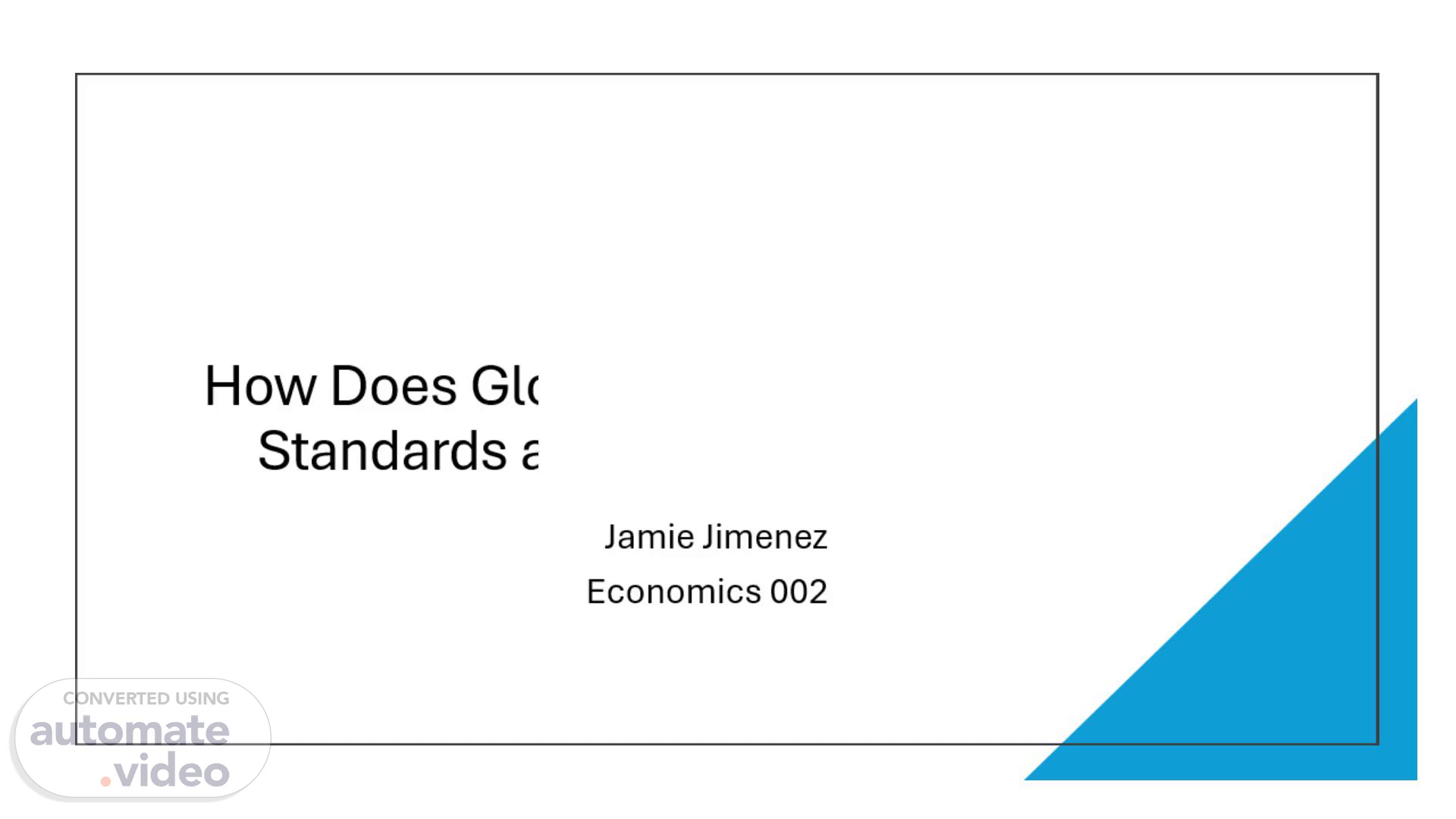
How Does Globalization Impact Labor Standards and Working Conditions?
Scene 1 (0s)
How Does Globalization Impact Labor Standards and Working Conditions?.
Scene 2 (8s)
What is Globalization?. Globalization is the process of international integration through the aspects of financial products, goods, technology, information, and labor across the borders Globalization improves the interaction between people, companies, workers, and governments throughout the world.
Scene 3 (24s)
What are the Benefits of Globalization?. Globalization gives new trading opportunities to countries. This allows business to have access to cheaper imported goods Promotes free trade that can lead to increase competition between countries that adopt a comparative advantage Globalization improves economic growth because of the increase of labor and raw material Globalization creates job opportunities for developing countries that benefit from businesses who outsource their labor.
Scene 4 (42s)
What are the Disadvantages of Globalization?. Causes job displacement in industrialized economies such as manufacturing jobs Exploits workers from developing countries through cheap labor markets Increases wage inequality by importing low skilled workers from developing countries and the unequal distribution of wealth within a country.
Scene 5 (56s)
What are the Effects of Globalization in the U.S. Economy?.
Scene 6 (1m 34s)
How Does Globalization Impact Labor Standards?. Labor standards are regulations that set up minimum requirements for wages, hours, and working conditions Globalization has led to the development of the International Labor Standards to be introduced in some countries Some countries may lower their labor standards because of the demand for low wage workers Developing countries may not enforce regulations or labor laws According to the 2018 International Trade Union Confederation, 86% of countries excluded workers from labor laws..
Scene 7 (2m 7s)
International Labor Standards. The International Labor Standards was established by the International Labor Organization to create basic human rights and principles at a workplace Fundamentals of ILS: Freedom of association, the right to collective bargain, elimination of child labor, elimination of forced labor, elimination of discrimination in employment, and to provide a safe working environment. Countries can ratify International Labor Standards conventions or they can use their standards as a basis for labor laws The International Labor Organization has 187 member states.
Scene 8 (2m 30s)
What are the Effects of Working Conditions in a Global Economy?.
Scene 9 (3m 9s)
Worker Exploitation in Globalization. Worker exploitation is the abuse of workers for profit in the form of unfair pay, being forced to work long hours, and poor working conditions that may be dangerous to workers Migrant workers, women, and children are susceptible to worker exploitation in developing countries Companies may seek to lower production cost, which can contribute to worker exploitation in developing countries According to an article "Profits and Poverty: The Economics of Forced Labor", at 15.1 million people Asia and Pacific countries had the highest number of people living in forced labor in 2021(International Labor Organization, 2024)..
Scene 10 (3m 41s)
A hand holding a digital globe Description automatically generated.
Scene 11 (4m 7s)
Conclusion. Although globalization is a complex subject, it has both a positive and negative impact towards labor standards and the working conditions towards the global economy Globalization allows companies to outsource their operations to other countries at a low opportunity cost which increases economic growth and its labor market However, globalization can lead to job displacement in advance economies Developing countries often face worker exploitation, poor working conditions, and income inequality The International Labor Organization introduces basic human rights and principles that addresses the challenges of globalization.